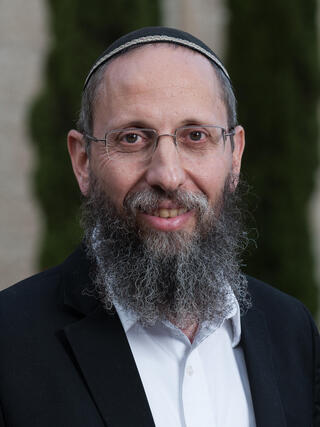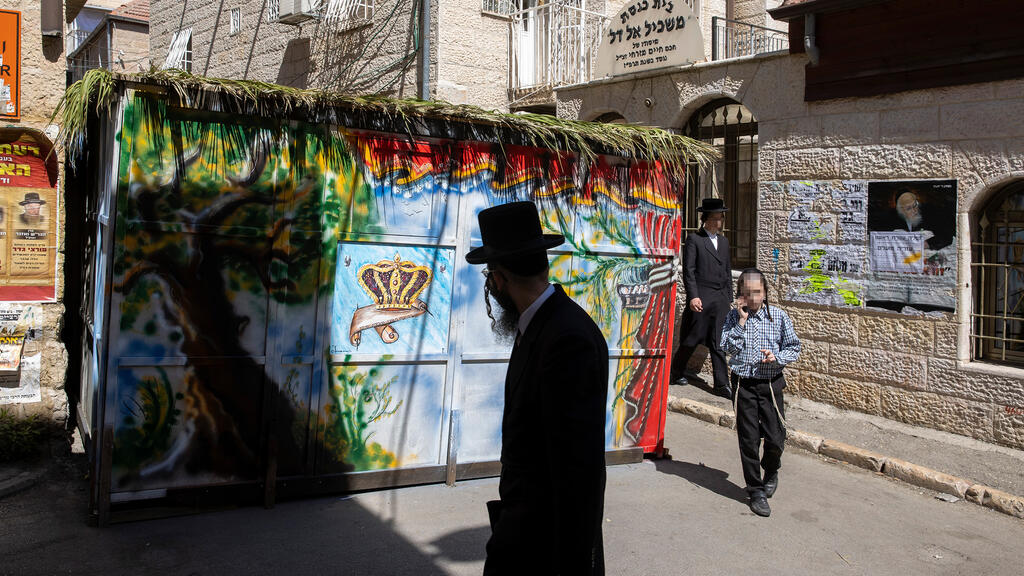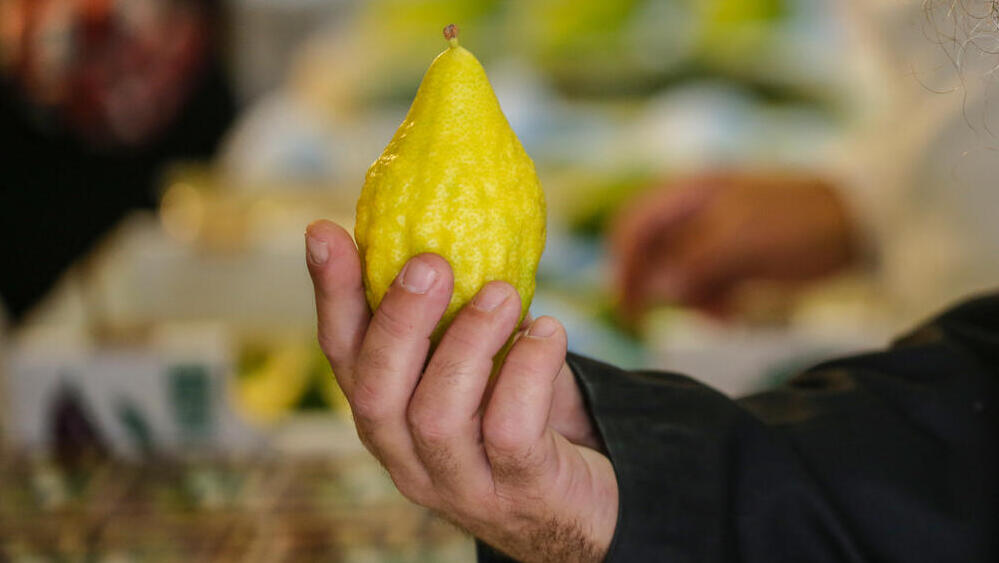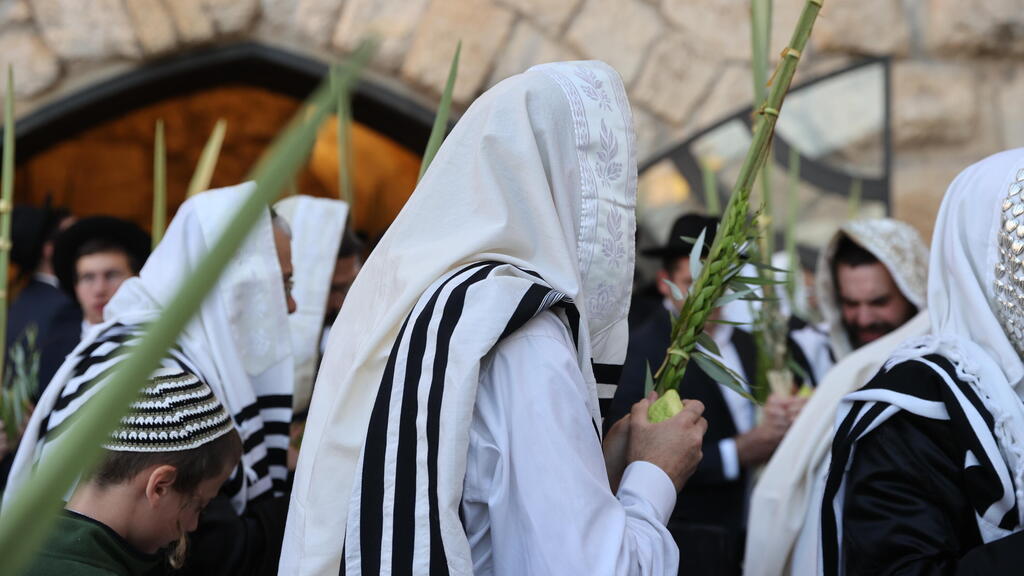Have you ever wondered why we celebrate the holidays so close together? A woman once asked me: “Couldn’t the holidays have been arranged in a more balanced way? Why this sequence of Rosh Hashanah, Yom Kippur and Sukkot?"
More stories:
The connection between Rosh Hashanah and Yom Kippur is relatively straightforward, and it is clear that they are closely tied to one another. They mark the beginning of a process when we once again declare the sovereignty of G-d, which doubles as a day of judgment, followed by 10 days of repentance culminating in Yom Kippur - a day of fasting, transcendence and forgiveness. But what about Sukkot? Why does it immediately follow these days?
On Rosh Hashanah and on Yom Kippur, individuals are expected to disconnect from the needs of their physical bodies and focus on their soul. This disconnection becomes most apparent on Yom Kippur, where virtually no attention is given to physical needs, as the Rambam explains [Shvitat Asor 1:4], and when we are required to abstain from eating and drinking and washing. It is a time when our attention shifts away from our physical needs.
Every year, during this period, the soul ascends while the body seeks to pull us back down. In essence, these days serve as an opportunity to “downplay” the body’s influence and prioritize the nurturing of the soul. This deliberate disconnect from physical distractions should aid us in elevating our souls to spiritual heights.
The Chuja family from Jerusalem built a sukkah in rapid motion
(צילום: גילה שרה חוג'ה)
However, humans are not meant to exist solely on this elevated plane. Unlike angels, we possess physical bodies, and our true challenge lies in the harmonious coexistence of our spiritual and physical selves. This is precisely the purpose of Sukkot. Sukkot is a holiday deeply rooted in physicality and materiality. We engage in the mitzvah of eating in the sukkah and sleeping in the sukkah. It is a time of double joy, as stated in Deuteronomy 16: 14-15: “You shall rejoice in your festival…and you shall have nothing but joy.” This joy is expressed through material symbols – in the consumption of meat and wine, in fine attire, and various other tangible forms. While seven sheep are typically sacrificed during all the holidays, Sukkot stands out with its offering of 14 sheep.
Sukkot serves as a bridge between the Days of Awe and the rest of the year. Its essence lies in examining whether we can apply the spiritual enrichment we gain during the Days of Awe to our daily lives, especially in the material and physical realms.
First day of Sukkot – a Yom Tov that coincides with Shabbat
The Mishna (written collection of oral teachings) states (Sukkah 41a:6):
"Originally, during the Temple era, the lulav (four species) was used in the Temple for seven days, and in the rest of the country outside the Temple it was used for one day. Once the Temple was destroyed, Rabban Yoḥanan ben Zakkai instituted an ordinance that the lulav should be used even in the rest of the country for seven days, in commemoration of the Temple."
According to the Mishna, the mitzvah of Netilat Lulav, or taking the four species, as specified in the Torah, was practiced in the Holy Temple for the entirety of the seven-day festival, whereas in the state, that is, in all places outside the Temple, the mitzvah is practiced only on the first day of the holiday.
Following the destruction of the Temple, Rabban Yohanan Ben Zakkai instituted that Netilat Lulav should be performed all seven days, outside of the Temple, as a way to commemorate the Temple. We therefore shake the four species all the days of the holiday, but on the first day of the holiday this mitzvah is considered d’oreita, or proscribed by the Torah, while on the subsequent days, it is categorized as d’rabbanan, or proscribed by the sages.
Moreover, it becomes evident from various passages in the Talmud, particularly in 29b:4 and elsewhere, that with regard to the regulations governing the four species, a distinction is made between the first day and the ensuing days of Sukkot. Some of the criteria defining the acceptability or fitness of the various species are applicable exclusively to the first day, and do not extend to the rest of the holiday.
Laws concerning the fundamental qualifications of the four species must be upheld throughout all seven days of Sukkot. For instance, an etrog that has been grafted with another species is considered unfit for use on any day of the festival.
However, there are specific aspects where we can exercise leniency on the days following the first day:
1. Ownership: On the first day of Sukkot, it is required that the four species should belong to the individual who is shaking them and not be borrowed unless they were explicitly given as a gift with the intention of returning them. On the subsequent days, borrowing the four species is permitted.
2. Physical Imperfections: On the first day, if the etrog is perforated or lacks the pitam (the dried remnants of the flower called the stigma) – it is deemed unfit for use. However, on the following days, it is considered kosher. There have been disagreements regarding other imperfections, such as the pitam falling off or the presence of spots on the etrog, with many cases recognizing them as kosher.
This year presents a unique situation where the first day of Sukkot coincides with Shabbat. Consequently, the custom of taking the four species is postponed to the following days because of Shabbat. Therefore, the act of taking the four species this year is considered d’rabbanan, allowing for some leniency in certain aspects related to the four species this year, such as a lulav with a split central twin-leaf.
A Moving Story from the Kovno Ghetto: Taking the four species on Shabbat
On the first day of Sukkot that will be celebrated this year on Shabbat, we will not take the four species. This is a special opportunity to remember and to speak about Jews who - during the Holocaust - took the four species with joy, and Rabbi Avraham of Kovno z”l blessed their actions. The story is related in Mima’amakim 4:5 written by Rabbi Ephraim Oshry, of blessed memory. Rabbi Oshry was saved from death at the hands of the Nazis. I had the privilege of meeting him in his final years, and hearing from him about the many difficulties he faced in maintaining Jewish life during that terrible period of time.
As the holiday of Sukkot approached, the residents of the Kovno Ghetto found themselves without the four species required for the celebration. The absence filled their hearts with sorrow, grief and pain, knowing they would be unable to fulfill the commandment of taking the lulav. Their deep distress stemmed from the uncertainty of whether they would ever have the opportunity to observe this mitzvah again, given the dire circumstances.
Then, a glimmer of hope appeared. A newly arrived Jew in the ghetto possessed the coveted four species. He was an expert, sent from Vilna to Kovno, to help in a workshop. However, a complication arose: the expert was slated to return to Vilna at the end of the first day of Sukkot. This posed a dilemma for the ghetto’s inhabitants. Did they stand to miss the mitzvah entirely? If the first day of Sukkot fell on Shabbat, as it did that year, and the expert departed at its conclusion, they feared they might be unable to fulfill the mizvah of the four species during Sukkot.
A pressing question arose: Could they secure halachic (Jewish law) permission to take the four species on the first day of the holiday, even though it was Shabbat?
The Talmud in Sukkah 42 states that, in spite of the Torah dictating that the four species must be taken on the first day of the holiday, or Yom Tov, even if it coincides with Shabbat, the sages decreed otherwise. They prohibited this practice, fearing that individuals might carry the four species in the public domain, thereby violating a severe Torah prohibition. “Rabba said: this prohibition is a decree lest one take the lulav in his hand and go to an expert to learn how to wave the lulav or how to recite its blessing.”
Rabbi Oshry, a young rabbi in the ghetto, found himself in the center of this complex situation. People came to him seeking guidance. After careful deliberation, Rabbi Oshry chose not to provide a definitive ruling of prohibition or permission. He reasoned: "Nevertheless, I did not want to rule a prohibition or a permission, and since I did not explicitly tell them it is forbidden, they gleaned that whoever will take the four species will not lose..." Consequently, the people of the ghetto decided to take the four species, recited the blessing over the four species, and the “She’hecheyanu” blessing that day.
Rabbi Feivel Zissman Hy”d, was resolute in his determination to fulfill the mitzvah without hesitation. He declared, “I am ready to accept hell for the performance of this commandment, for all my days I have invested much capital to buy an etrog mehudar (with extra beauty), and now perhaps before my death I am certain that the performance of this commandment, will stand as a zchut (reward) for me on the day of judgment."
 Rabbi Yosef Tzvi RimonPhoto: Yehoshua Halevi
Rabbi Yosef Tzvi RimonPhoto: Yehoshua HaleviDuring that time, a gadol hador, or great man of the generation, Rabbi Avraham of Kovno (Dvar Avraham Responsa), was staying at Kovno Ghetto. He was ill, and it was impossible to ask him at that time. Eventually he felt well enough for Rabbi Oshry to approach him. Rabbi Avraham’s response was profound and compassionate: “For cases such as these, the Sages did not rule out their decrees.” He understood that the decrees of the Sages did not apply to the unique circumstances of the ghetto. The Sages did not address a situation where people were imprisoned, living in constant fear of death.
Who is truly a free person? Is it the Germans, who roamed as powerful beings, yet behaved like beasts? Or is it those Jews who endured the shackles of bondage, persecution and murder, yet find freedom in in spirit? These souls sought G-d and morality, even amid the most horrific bondage. In their enduring faith and adherence to mitzvot, they embody a profound kind of freedom – one that transcends the physical realm and touches the very essence of the human spirit!
- Rabbi Rimon is the Rabbinic Head of the Jerusalem College of Technology and the head of its Batei Midrash and serves as the rabbi of the Gush Etzion Regional Council







